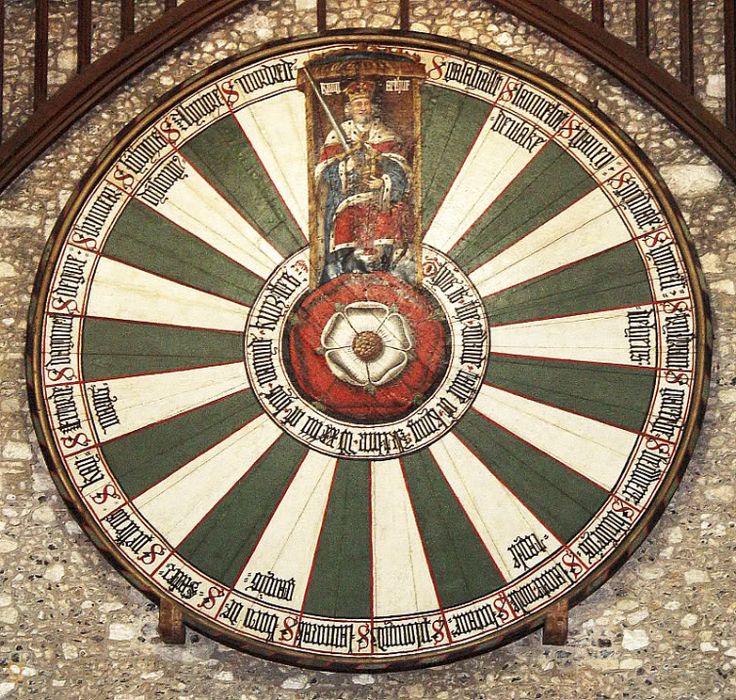
We all are familiar with the legend of the boy Arthur who the wizard Merlin prophesized would be the one to pull the magical sword, Excalibur from the stone and become the king. You may even know the part where King Arthur and his knights of the round table set out in search of the Holy Grail to reclaim the glory that was lost in their beloved Camelot. (Not to be confused with Monty Python’s version, “Spamalot”)
I had the opportunity to see a replica of King Arthur’s round table when I traveled to Winchester Castle in England. As its name suggests, it has no head, and the implications are that every person seated there had some say in the way the organization functioned. If we were to think of the church of Jesus Christ as a glorious Camelot-like Kingdom, then I propose that the Senior Pastor of each church take on a leadership style like that of King Arthur.
Since the beginning of recorded time, leadership has been practiced as a top-down system of hierarchical authority. The Pharaohs who were at the top of the pyramid practiced top down leadership and most organizations have operated in much the same way ever since. Senior executive sets the agenda and the bosses delegate the work that everyone within the company does. It is the model that found it’s heyday during the early industrial age. This autocratic approach to leadership worked at that time when employees were deemed to be an expendable commodity and machinery was the valued asset in any business. But the information age we live in today demands a totally new style of management.
Here in the first quarter of the 21st century, social, economic and communication conditions have dramatically changed, and so therefore the need for how leadership functions within organizations. Effective leadership has become a more wide-spread, flattened out may I say circular phenomenon open to everyone within an organization. If any entity should be the champions of this kind of synergistic community, it should be the church.
Under Merlin’s tutoring, King Arthur gathered his leadership team ,the Knights, around a table where everyone had a say. Though everyone had an equal opportunity to share thoughts and insights as to how Camelot was to be governed, it was King Arthur who was recognized as the first among equals who led this gathering as well as country in a very effective way.
While serving on the faculty in the Leadership Studies Department at Fort Hays State University I taught a course where the primary resource was the work of Robert Greenleaf who bridged the traditional structural approach to leadership with a more human-centered one. Greenleaf’s contribution to the field of leadership is known as Servant Leadership.
“The servant-leader is servant first, it begins with a natural feeling that one wants to serve, to serve first, as opposed to, wanting power, influence, fame, or wealth.”* ― Robert K. Greenleaf, Servant Leadership: A Journey into the Nature of Legitimate Power and Greatness
Greenleaf re- introduced the Arthurian idea of “the first among equals”model to modern leadership thought. Often called by its Latin form, primus entre pares, a first among equals model is based upon a shared respect between each person within a team or the organization.
A first-among-equals approach means that in the context of the work, the person with the most immediate responsibility for the work leads. The others all assist as servant leaders. On a team that has many different facets to it work, leadership rotates through the team to that person who also has the knowledge and expertise to facilitates the team’s work together.
The ‘Primus Inter Pares’ approach to leadership – first among equals – offers us a new way of managing and leading in the 21st century. With this approach, all employees are seen as equals and experts in their areas of responsibilities, regardless of their position or status. Youth Pastors are empowered to lead the youth ministry team. Children’s directors are authorized to lead the children’s crew, The Worship Leader enlists, trains, nurtures and holds accountable the members of the music ministry. There is, of course, someone, the first among equals, the Senior Pastor who has the role of ultimate decision maker, but with this approach, the opinions and individual talents of everyone are all valued and recognized.






In a graduate experiment at University of Wisconsin-Milwaukee, with American Motors management we developed a much more tolerant management model and a less structured work environment design. In cooperation from their UAW union leadership, another UofW group implemented this approach at American Motors Kenosha WI. It was called the Happiness For Lunch Bunch experiment. We watched productivity drop immediately and then climb slowly after about 8 weeks and after 20 to 24 weeks exceeded their historic past productivity records. Their was a new work culture.
The conclusion at the time was that people inherently wanted to do a good job if placed into a participative environment that recognized results. I think this applies a lot to the church day-to-day administrative environment and developing support for Pastoral visions.